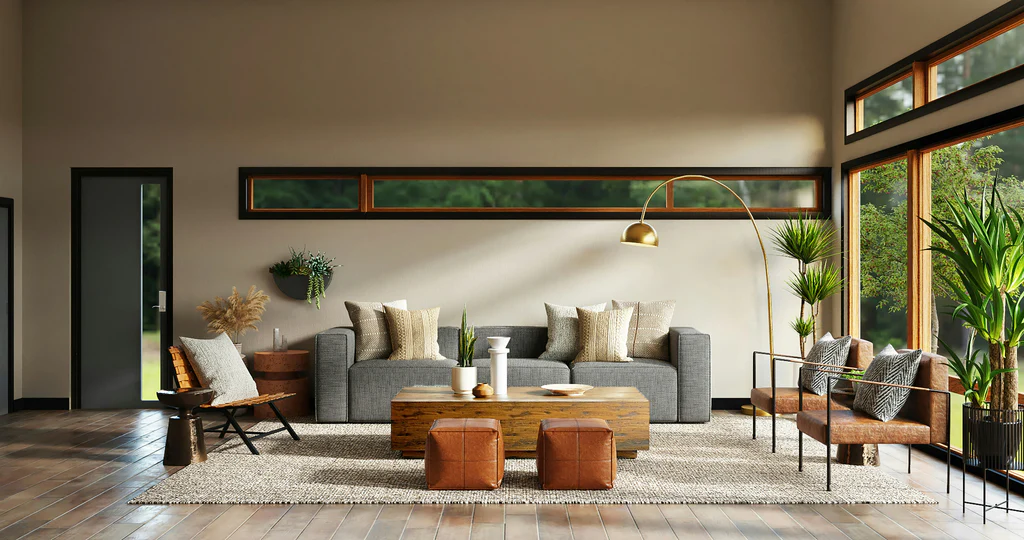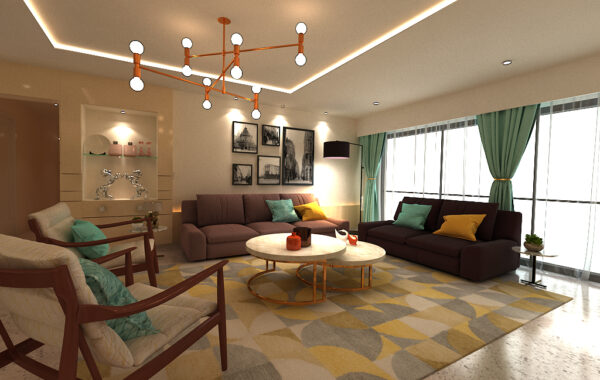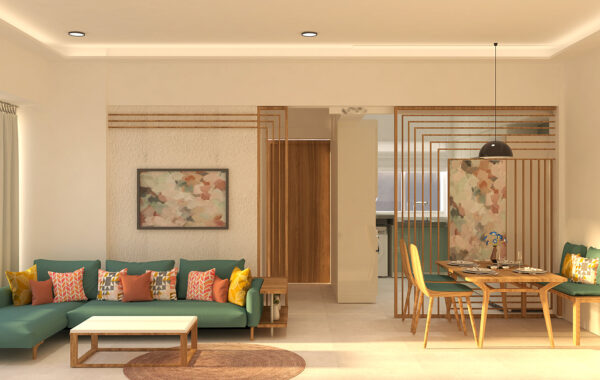Interior design isn’t just about color palettes and furniture placement—it’s about creating environments that support your emotional well-being.

🧠 Why Design Affects Emotion
Research shows that sensory input—light, sound, layout, color, texture—can either calm the nervous system or increase stress. This is especially important for those recovering from emotional wounds.
A healing home should feel three things:
Safe, soothing, and empowering.
🌈 1. Healing with Color
Color has a dir
ect effect on mood, heart rate, and emotional stability.
- Soft blues and greens are calming and ideal for areas of rest or reflection.
- Warm neutrals (like sand, cream, or soft taupe) create emotional warmth and familiarity.
- Earthy tones such as clay, moss, and terracotta help you feel grounded and connected.
- Avoid overstimulating tones like harsh reds or neon brights in rooms meant for healing. These can trigger stress and irritability.
Try creating a palette based on how you want to feel—not what’s trending.
🌿 2. Bring Nature Inside (Biophilic Design)
Nature has a proven ability to soothe anxiety and restore emotional balance. Biophilic design, or nature-inspired interiors, is especially beneficial for grief and trauma recovery.
Easy ways to integrate nature:
- Houseplants: Even one or two can improve mood and air quality.
- Natural textures: Incorporate wood, stone, jute, or cotton.
- Nature-themed art: Landscapes, forests, ocean imagery.
- Earth-based shapes: Curves and asymmetrical forms over sharp angles.
Spaces that reflect the natural world help us reconnect to something larger and more constant than our pain.
🛋️ 3. Texture = Emotional Comfort
Touch is an underrated part of design—but a key part of healing.
- Use soft materials like fleece, velvet, wool, and linen.
- Layer textures: plush rugs, knitted throws, and smooth surfaces offer variety and grounding.
- Include weighted or tactile objects: thick blankets, textured cushions, or ceramic pieces that feel comforting in the hand.
Our brains associate texture with security—think of the feeling of a childhood blanket or a worn sweater. Recreate that familiarity intentionally.
🌞 4. Lighting That Heals
Lighting can either energize or overwhelm. For emotional healing, your lighting should offer rhythm, softness, and control.
- Let in natural light whenever possible. It regulates mood and sleep cycles.
- Use warm-toned bulbs in the evening—cool white light can overstimulate and disrupt relaxation.
- Add dimmable lamps or soft task lighting to give yourself control over ambiance.
- Avoid harsh overhead lighting in spaces designed for calm.
The key is to mirror nature’s light transitions: bright during the day, soft and low in the evening.
🧭 5. Layout: Create Space to Breathe
When you’re emotionally overwhelmed, clutter and chaos in your environment can amplify your stress. Design a layout that encourages mental clarity and ease.
- Create clear walkways and open floor space.
- Separate zones for different emotions: a reading corner for comfort, a journal desk for reflection, or a cozy nook for solitude.
- Use hidden storage to reduce visual clutter.
- Keep surfaces minimal—let the eye rest.
Even in a small room, strategic spacing and intentional design give your mind more room to breathe.
🧩 6. Personalize with Purpose
In healing spaces, what you include—and exclude—matters deeply.
- Surround yourself with objects that bring comfort, not pain.
- Remove or store items that are heavily associated with loss or trauma.
- Display photos, artwork, or keepsakes that reflect who you are becoming.
- Keep at least one space that is entirely yours, whether it’s a nightstand, desk, or shelf—filled only with things that bring peace or meaning.
Home should be a mirror of your emotional journey.
🛏️ 7. Room-by-Room Suggestions
Bedroom (Rest & Safety)
- Use cool, calming tones like blue or sage.
- Add layered bedding and blackout curtains.
- Minimize tech to support deep rest.
Living Area (Comfort & Community)
- Arrange seating for warmth and conversation.
- Use earth-toned accents, soft lighting, and plants.
- Create one cozy nook for solitude or journaling.
Workspace (Stability & Expression)
- Use natural light if possible.
- Keep the desk surface simple and organized.
- Add one piece of art or color that inspires calm creativity.
💡 Final Thoughts
Your home can be more than just a space—it can support your healing. With thoughtful design, you can create a sanctuary that eases grief, anxiety, and abandonment. Start small by asking: What makes me feel safe and at ease? Then, slowly shape your space to reflect that.


